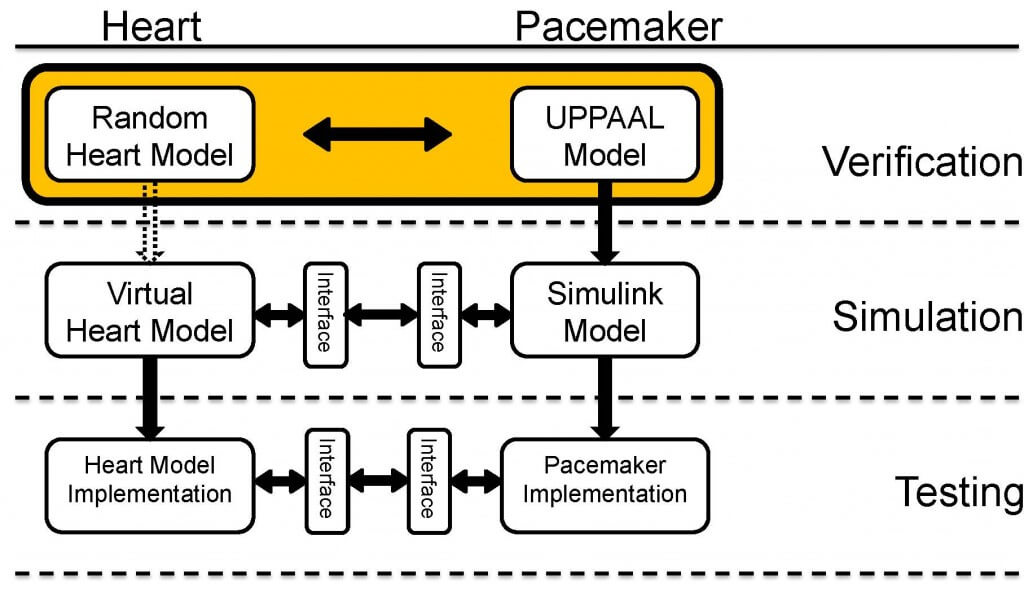he design and implementation of software for medical devices is challenging due to their rapidly increasing functionality and the tight coupling of computation, control, and communication. The safety-critical nature and the lack of existing industry standards for verification, make this an ideal domain for exploring applications of formal modeling and analysis. The algorithms of the device are represented as abstract model and their safety and efficacy can be mathematically proved using model checking techniques. In this project, we use a dual chamber implantable pacemaker as a case study for modeling and verification of control algorithms for medical devices in UPPAAL.

On-going Research
Quantitative Verification
Safety requirements are 0 or 1 criteria which are not enough to address the complexity of the interaction of the human heart and the pacemaker over the variety of patient conditions. For a more comprehensive evaluation of pacemaker performance, we need to introduce quantitative criteria for both efficacy of therapy and energy consumption of the device.
The design and implementation of software for medical devices is challenging due to their rapidly increasing functionality and the tight coupling of computation, control, and communication. The safety-critical nature and the lack of existing industry standards for verification, make this an ideal domain for exploring applications of formal modeling and analysis. In this study, we use a dual chamber implantable pacemaker as a case study for modeling and verification of control algorithms for medical devices in UPPAAL. We begin with detailed models of the pacemaker, based on the specifications and algorithm descriptions from Boston Scientific. We then define the state space of the closed-loop system based on its heart rate and developed a heart model which can non-deterministically cover the whole state space. For verification, we first specify unsafe regions within the state space and verify the closed-loop system against corresponding safety requirements. As stronger assertions are attempted, the closed-loop unsafe state may result from healthy open-loop heart conditions. Such unsafe transitions are investigated with two clinical cases of Pacemaker Mediated Tachycardia and their corresponding correction algorithms in the pacemaker. Along with emerging tools for code generation from UPPAAL models, this effort enables model-driven design and certification of software for medical devices.
Other Members:
- Miroslav Pajic
- Salar Moarref
Resources


18th International Conference on Tools and Algorithms for the Construction and Analysis of Systems (TACAS), 7214, Page(s): 188-203, 2012.
